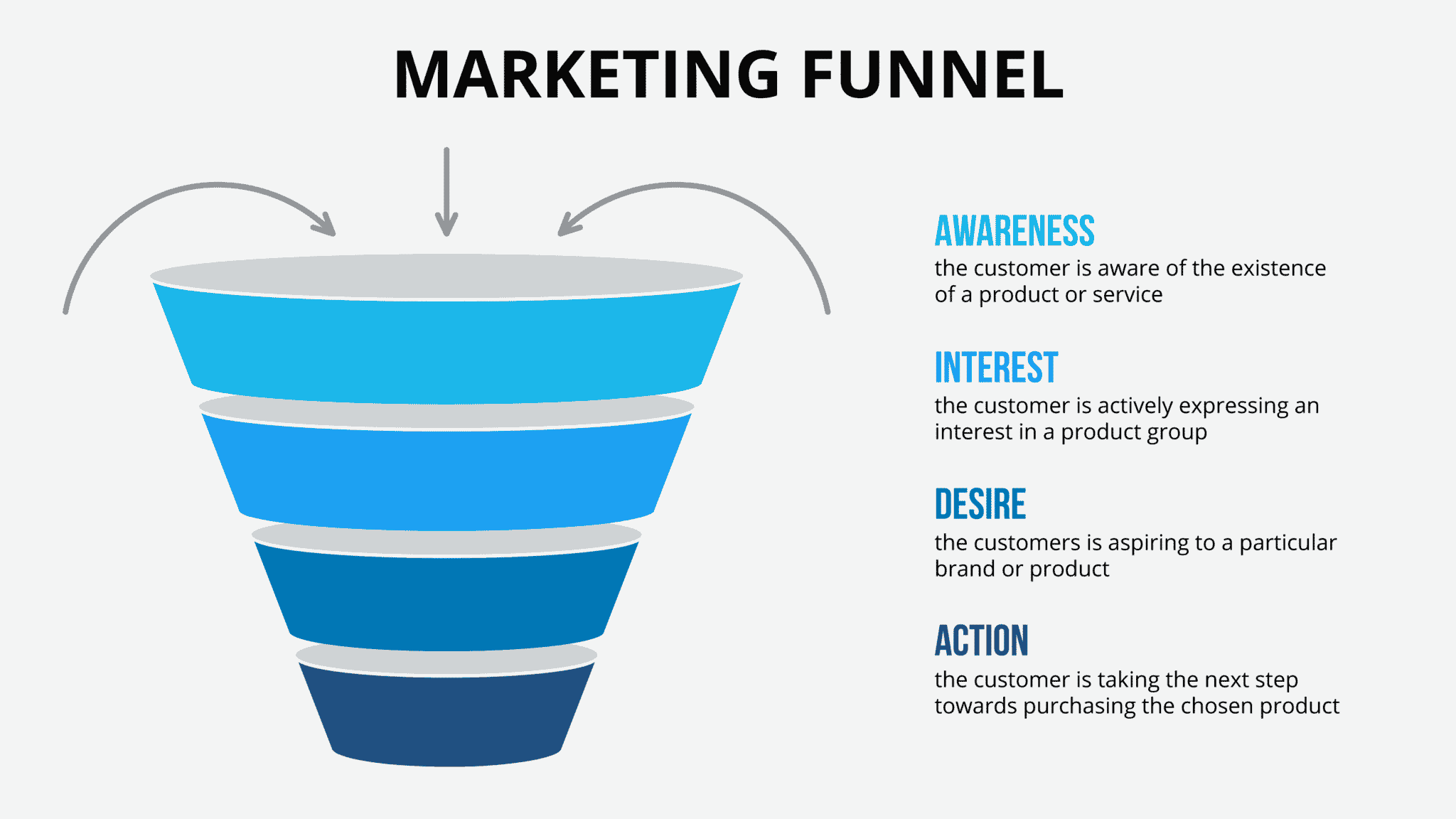Mobile funnels
A marketing funnel is an important element of your sales process, to attract a potential customer and convert them into an actual customer.

The marketing funnel is a model that breaks down the different stages of the journey that a customer makes, right from their first initial awareness of your product or service to the moment they buy from you.
There can be very simple marketing funnels, and there can be much more sophisticated funnels: this is down to things like the business sector you operate within, the type of product or service you’re selling, and your target demographic.
 Cutting edge payroll software
Cutting edge payroll software
- Powerful and easy to use
- HMRC & RTI compliant
- Used by payroll pros
 The CRM platform to grow your business
The CRM platform to grow your business
- Great for entrepreneurs
- Powerful data analytics
- Manage sales and data
 Powerful web builder and advanced business tools
Powerful web builder and advanced business tools
- Great for startups
- Powerful web page builder
- E-commerce available
 Supercharged content planning
Supercharged content planning
- Great for marketing
- Better than lists or sheets
- Manage social media
 Create a new website in 10 minutes. Easy.
Create a new website in 10 minutes. Easy.
- Launch your website fast
- Powerful data intuitive
- No coding skills needed
But they all share the same basic aim – brand/product awareness, consideration, conversion, and finally retention following purchase.
The original marketing funnel concept was devised by advertising executive Elias St. Elmo Lewis in 1898, with a structured customer journey following a linear path through the four stages as mentioned above.
App funnel
Diagram: app marketing funnel

However, since digital technology wasn’t around in 1898, today’s marketing funnels need to be a lot more sophisticated to cater for a much more savvy audience, especially when marketing mobile apps that may need more than the four basic stages developed by Lewis, which are: awareness, interest, desire, and action, commonly known as the AIDA model.
Mobile marketing app funnel approach
As marketing techniques and modern-day technology has advanced the four basic stages have evolved over time, but still reference the original model as defined by Lewis.
As part of the awareness stage, mobile marketers will use the tools they have available to raise awareness of their app and draw attention to the product. Marketing tools may include:
- Email marketing
- referral marketing
- social media marketing
Mobile app marketers need to cast a wide net at the beginning stages of their marketing funnel because they know they will lose some users as they progress down the marketing funnel.
Marketing a mobile app really is a numbers game. The more leads that you can generate during the awareness and interest stage, the more likely you will end up with a healthy number of customers at the conversion stage.
Tweaking the funnel for mobile app marketing
While the original marketing funnel has been effective for well over one hundred years and is still in use today, the original design doesn’t reflect today’s mobile marketing efforts.
You can use a similar layout to the traditional funnel for your mobile app marketing, but the tactics you use to walk your customers along the path will look very different.
The original path was a very simple, linear process, but your mobile customer journey is much more complex and needs to be personalised to resonate with their desires and needs. There are so many resources available to customers today that their impulse to buy can be much faster than in previous times, especially if you can hit on one of their major pain-points and offer an instant solution.
The exposure and awareness stage
Your mobile app marketing funnel must begin with the exposure and awareness section. You cannot hope to sell your app unless your customers become aware of your brand and product.
The most common marketing tactics that are good for mobile app marketing are content marketing, paid advertising such as pay per click, social media, and organic search. Sharing your useful and valuable content across these platforms will help to expose your app to your target audience.
The consideration stage
This section of your marketing funnel concentrates on providing leads with valuable and trusted content to influence and guide the user’s decision.
It is at this stage that your potential customer will be looking for trust signals, such as positive reviews, app ratings, and social proof to get them through the consideration stage. So for example, if your mobile app is available through top app stores, these are considered to be trusted sources for this stage of your sales funnel.
App ratings are a deciding factor here. According to Statista, consumers downloaded 204 billion mobile apps to their connected devices, up from 140.7 billion app downloads in 2016.
However, 85% of people won’t download an app that has a 2-star or less rating on the app store.
This means that your marketing team must make sure that your app listing is well-optimized to highlight strong reviews to encourage users to download.
Users at this stage are simply doing their due diligence to make sure their final decision to buy is the right one. Positive customer reviews and ratings hold the power of persuasion, so you need to make sure that your user experience is well emphasised.
The conversion stage
This is the stage where your leads decide to take action and buy your mobile app. You need to make this part of your marketing funnel as seamless and easy to complete as possible.
Make sure there is no friction here – no distractions that take them away from their purchase process, such as encouraging them to sign up to your email list or to consider another product you may offer.
Make the buying process clear with tools such as additional clicks, order forms, or simple account creation processes. These will help prevent your leads from becoming bored or frustrated and leaving before purchasing your app.
For mobile apps, marketers and app developers need to work collaboratively to ensure that the user interface and experience (UI and UX) work seamlessly to deliver a positive customer experience within your app.
You should also consider your onboarding process to make sure that it takes as little time as possible for your customer to start using your app.
The retention stage
Remember that it is easier to sell to an existing customer than convert a new one! It is also about five times more expensive to replace a customer than to retain one. Once you have made a conversion, you shouldn’t abandon them to go in search of a new one.
Mobile app marketers need to keep their existing users engaged by providing value for money long beyond their initial purchase.
You may have created a great first impression, but you face an uphill climb to establish long-lasting trust in your users. It can be useful to utilise tools such as personalised in-app messaging, push notifications, and regular product updates to add value to your customer’s purchase and keep them using your app for a long time.
Make sure to update your in-app content regularly to keep users engaged and their overall UX fresh and interesting.

